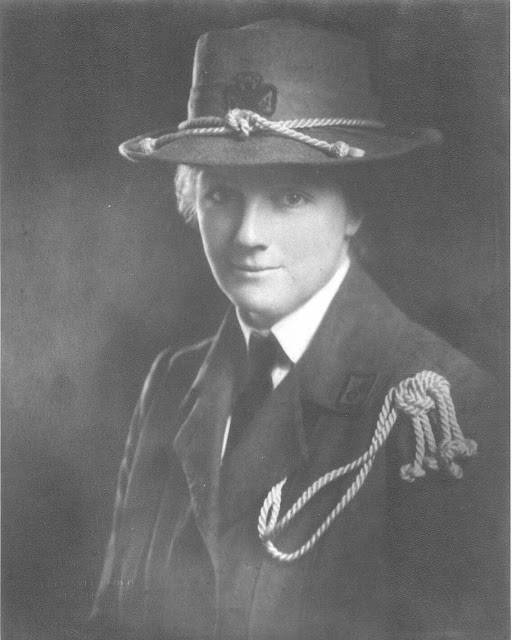It’s the birthday of the organization
that the ranting right likes to blame for lesbianism, abortion,
Godlessness, tolerance of immigrants and dusky minorities,
and a general threat to the American way of life. Yet the Girl
Scouts of America (GSA) doesn’t seem to care and sails serenely and successfully
on while the erstwhile conservative pet Boys Scouts have nearly collapsed
in the wake of sex abuse scandals, financial mismanagement,
a history racism, anti-Gay bigotry, and discrimination against
women and girls. The former BSA
was forced to admit Gay Scouts and leaders leading to their largest troop
sponsor, the Church of the Latter Day Saints (Mormons) to
abandon them. Opting to admit
girls to most programs caused Fox News talking heads to explode
and membership has plummeted to a fraction of boys served just a
few decades ago.
On March 12, 1912 Juliette
Gordon Low established the first troop of Girl Guides in America in her hometown of Savannah, Georgia. The troop included 12
girls, mostly friends of her niece Margaret Gordon, who became the first enrolled member. The following year Low changed the
name of her organization to Girl Scouts
of America.
Girl Scouts founder Juliette Gordon Low.
Low was born in
1860. Her father, a member of
an old Georgia family was soon off to war as a Confederate officer. Her mother was a Kinzie, one of the founding
families of Chicago. Her
mother encouraged Daisy, as she was called, in her interest in both the arts and social service. She wrote
poetry, painted, and eventually
became a skilled sculptor.
She grew up privileged
and enjoyed the finest education
available to girls of her class. She was sent to boarding school at the Virginia Female Institute and then to
fashionable French finishing school in New York. She spent years
touring extensively in Europe and the U.S. before marrying William
Mackay Low, a wealthy Englishman
in her Savannah home.
An errant grain of rice thrown at the wedding ruptured an ear drum and the following infection left her totally deaf in that ear. Childhood illness had severely damaged the hearing in the other. Despite her
disability Low continued to lead an active life.
The couple settled
in England, but Low returned annually
for extended stays in the
States. When the Spanish American
War broke out, her father was commissioned
a General. Low joined her
mother in establishing a hospital for wounded soldiers.
Although she afterward returned to England, her marriage was
in a shambles. She separated from her husband but for social reasons could not divorce. His death in 1905 freed her
to find a new mission in
life.
A chance meeting in 1911 with Sir Robert Baden-Powell, founder of the Boy Scouts and Girl Guides
in Britain awakened her interest in youth work. She returned to her ancestral home in
Savannah and began the work.
She did not slavishly
copy Baden-Powell program, which she thought did not do enough to
encourage independence in young
women and which kept them in an inferior
status to boys. She
kept her organization separate from
the new Boy Scouts of America so as
not to be swamped. But she defiantly took the name Scouts to emphasize parity.
Her program did not just include wholesome outdoor activity and domestic
arts, but also encouraged the arts, intellectual
development and leadership skill
necessary for women to establish careers
and take positions of civic leadership. She also defied convention—and shocked
many—by insisting that disabled girls
be admitted as full members in integrated troops.
She saw her organization grow rapidly from its humble
beginnings and spread across the
nation. With her extensive
international experience and her contact
with Girl Guide and Scout
movements in Europe on all sides even during the First
World War she helped establish the World
Association of Girl Guides and Girl Scouts after the end of the conflict.
Low died of breast cancer in her beloved home in
1927. In 1953 the Girl Scouts purchased and restored that home as the Juliette Gordon Low Girl Scout National
Center. Known reverently as simply The Birthplace, it was designated a National Historic Landmark in 1965.




No comments:
Post a Comment